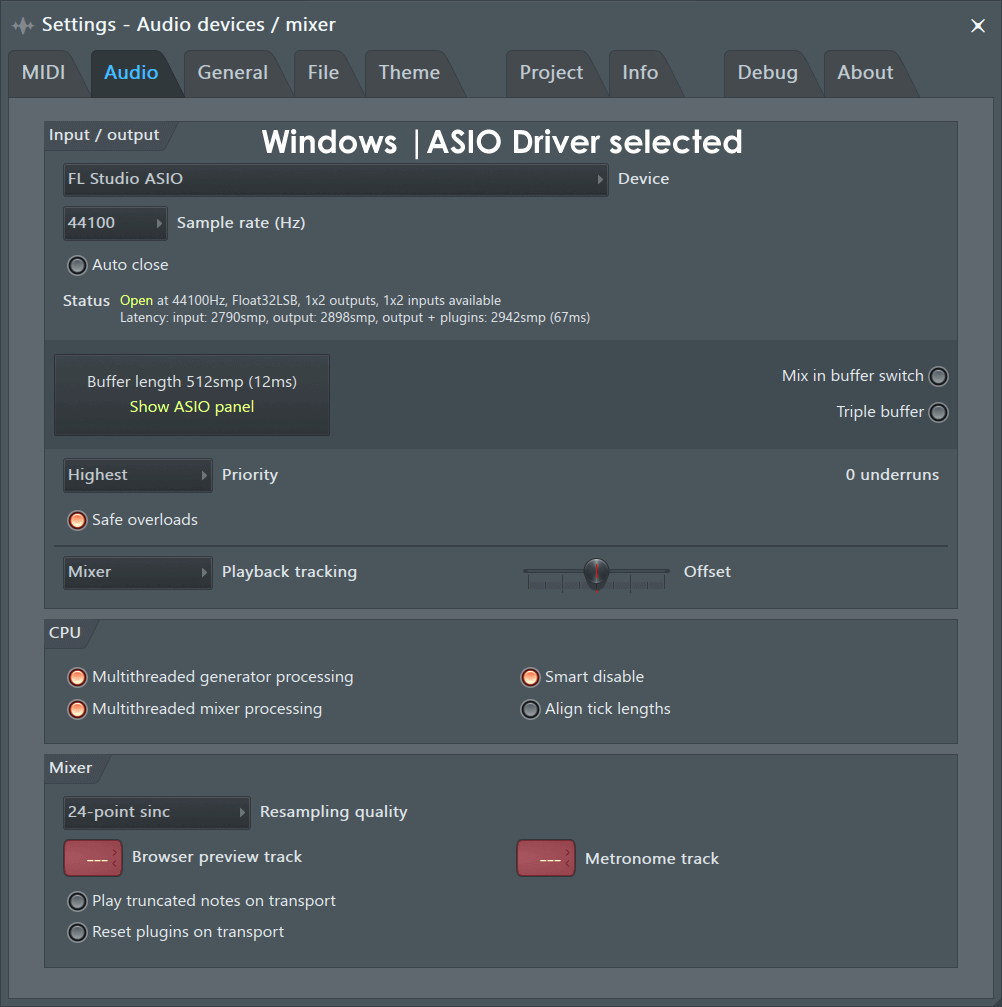
This means, when using a sample rate of 48kHz, we can capture audio frequencies up to 24kHz. Sample rate ÷ 2 = maximum frequency that can be correctly captured The maximum frequency that can be captured correctly by a recording device 1 is limited by the sample rate the device is set to. 48000 (forty-eight thousand) samples are being captured each second by your audio recording device.Īs you increase the sample rate, you capture more samples of the incoming audio signal each second. Sample Rates come in 'bands' and common examples include:įor example, when recording using a sample rate of 48kHz. Sample Rate values are typically written in kHz (kiloHertz). It is to audio what frame-rate (Frames Per Second) is to video. The answer is NO! Buffer size will not affect your audio quality, so don’t worry using the lowest buffer size, the only thing it will affect is processing speed and latency.Sample Rate is the number of times the audio is captured per second. When you start to notice latency, lower your buffer size, and when you hear crackles or your computer start to slow down, use higher buffer size. When it comes to editing, mixing and mastering, there’s no other choice, only 1024, I don’t want to have too much strenuous on my processor, it’s smoother using 1024. I will find the sweet spot where I can run those plugins without noticing the latency.

Personally, I will choose 64 or even 128 when I’m recording, because I can run some plugins like EQ and compressor in real time, I don’t like to monitor completely dry signal. High buffer size is the main reason that causing latency issue, but when you are mixing and mastering, you need to run multiple plugins simultaneously, you should choose higher buffer size like 512 or 1024. It depends, most DAWs will have different buffer size 32, 64, 128, 256, 5, when you are recording, you need to monitor your input signal in real time, so choosing lower buffer size like 32 or 64 with quicker information processing speed to avoid latency.

With higher buffer size, the computer processor handles the information slower, but it takes fewer system resources and it’s less strenuous on the computer processor. With lower buffer size, the computer processor handles the information very quickly, it takes more system resources and it’s pretty strenuous on the computer processor. What buffer size do, is it determines how fast the computer processor can handle the input and output information. It’s hard to explain what is buffer size, it’s a little abstract.


 0 kommentar(er)
0 kommentar(er)
